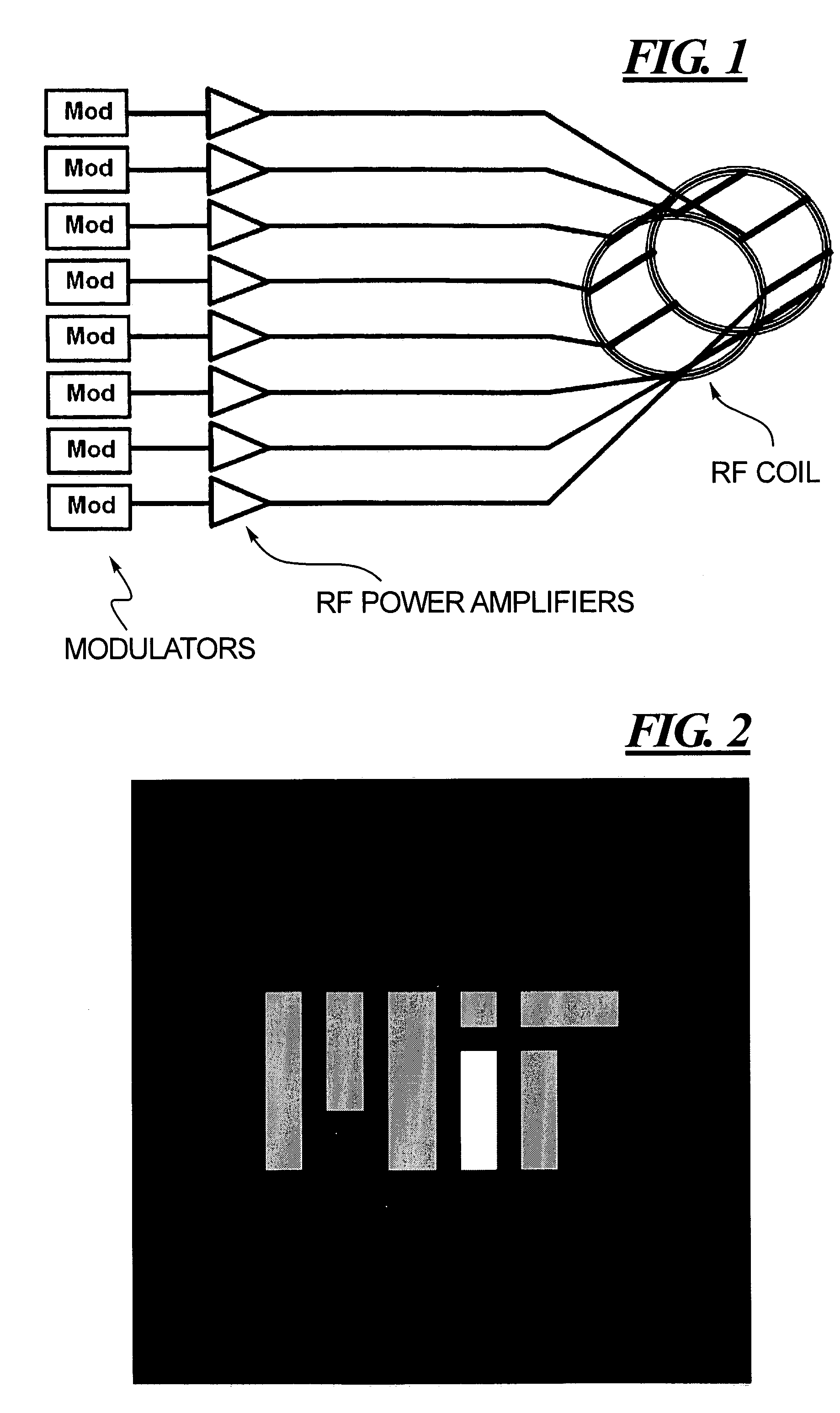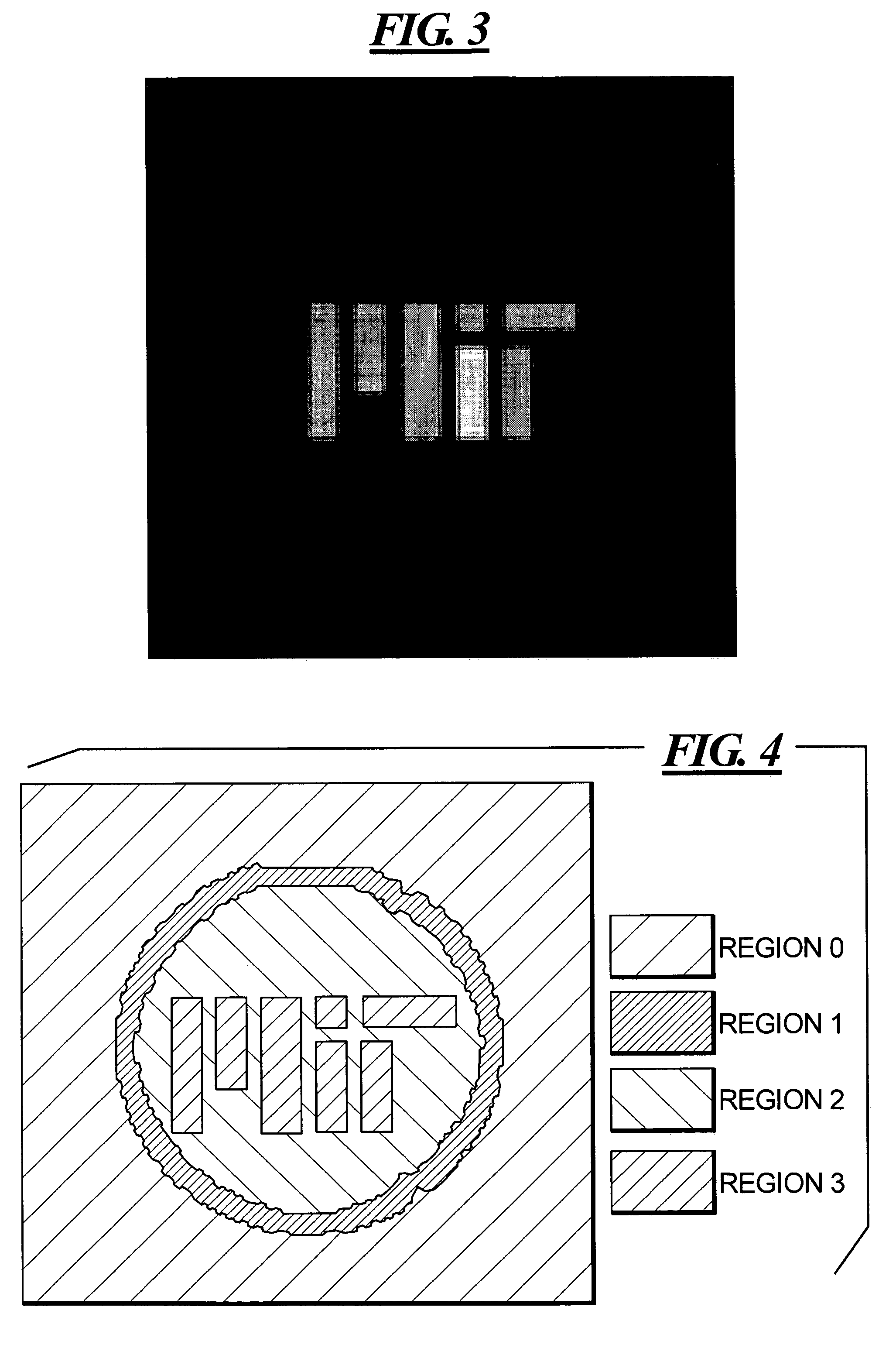Method for designing RF excitation pulses in magnetic resonance tomography
a technology of excitation pulses and magnetic resonance tomography, which is applied in the direction of magnetic measurements, instruments, measurement devices, etc., can solve the problems of reducing the signal-to-noise ratio (snr) and image contrast, affecting the quality of rf excitation pulses, etc., to achieve better results
- Summary
- Abstract
- Description
- Claims
- Application Information
AI Technical Summary
Benefits of technology
Problems solved by technology
Method used
Image
Examples
Embodiment Construction
[0029]First, parallel excitation RF waveform design is discussed, followed by a discussion of three algorithms for (approximately) solving a linear system of equations.
[0030]The equations describing the interaction between the RF waveforms played along each coil array and the resulting excitation pattern are nonlinear and complicated. Thus, it is desirable to reduce the system of equations in some manner to simplify the overall RF design process.
[0031]Grissom et al. simplify RF design for parallel systems by first applying a parallel small-tip angle approximation to the original set of equations and then discretizing the result in the spatial and temporal dimensions [3]. The use of the small-tip angle approximation is greatly beneficial because it reduces the RF design problem from a set of nonlinear equations to a set of linear ones that contains a Fourier transform. The linearized excitation due to P coils is written as follows:
[0032]m(r)=ⅈγ∑p=1PSp(r)∫0TB1,p(t)ⅇⅈr·k(t)...
PUM
 Login to View More
Login to View More Abstract
Description
Claims
Application Information
 Login to View More
Login to View More - R&D
- Intellectual Property
- Life Sciences
- Materials
- Tech Scout
- Unparalleled Data Quality
- Higher Quality Content
- 60% Fewer Hallucinations
Browse by: Latest US Patents, China's latest patents, Technical Efficacy Thesaurus, Application Domain, Technology Topic, Popular Technical Reports.
© 2025 PatSnap. All rights reserved.Legal|Privacy policy|Modern Slavery Act Transparency Statement|Sitemap|About US| Contact US: help@patsnap.com



